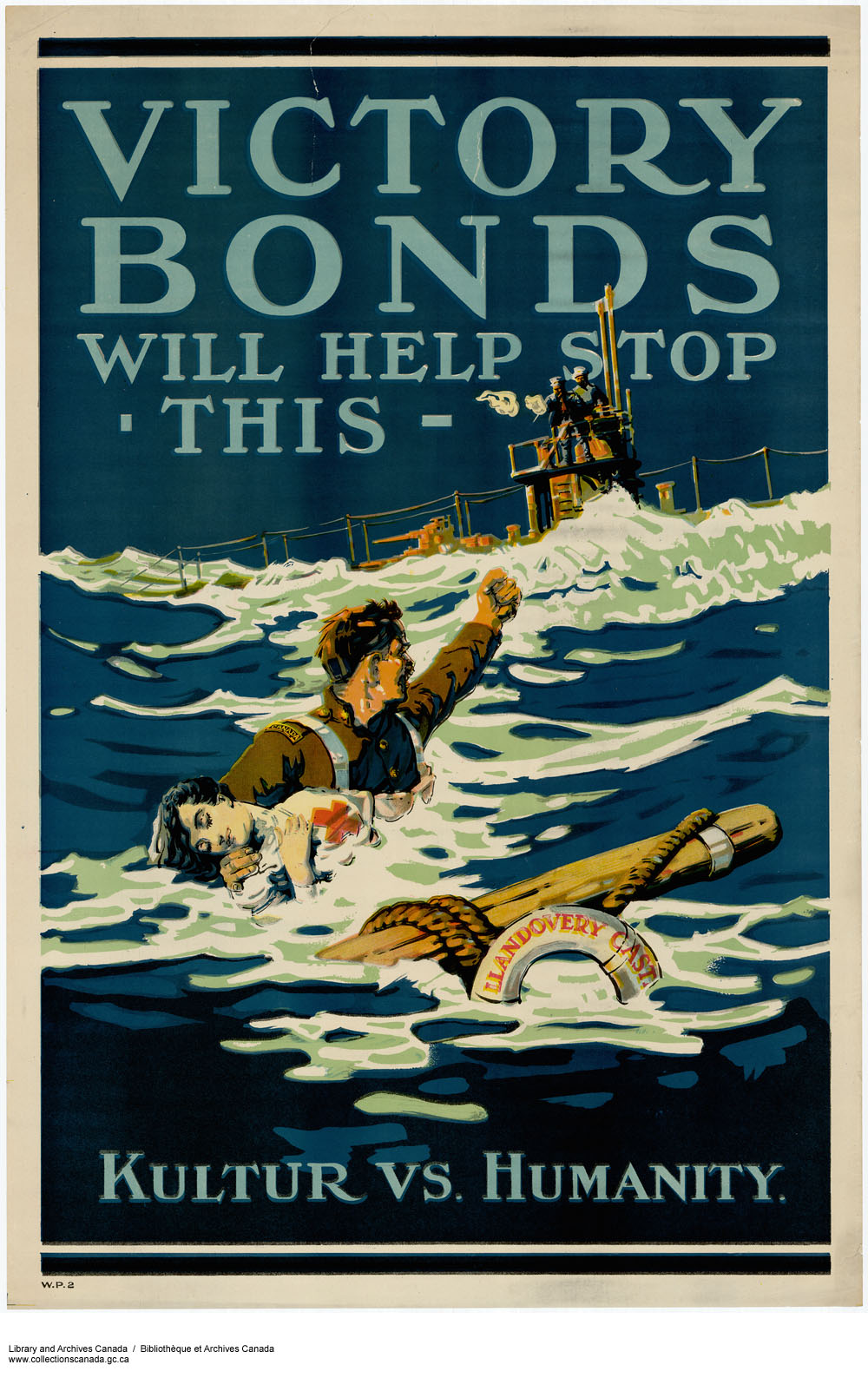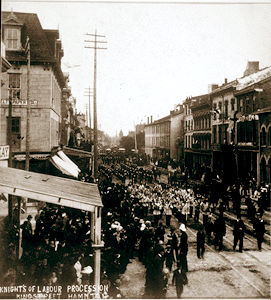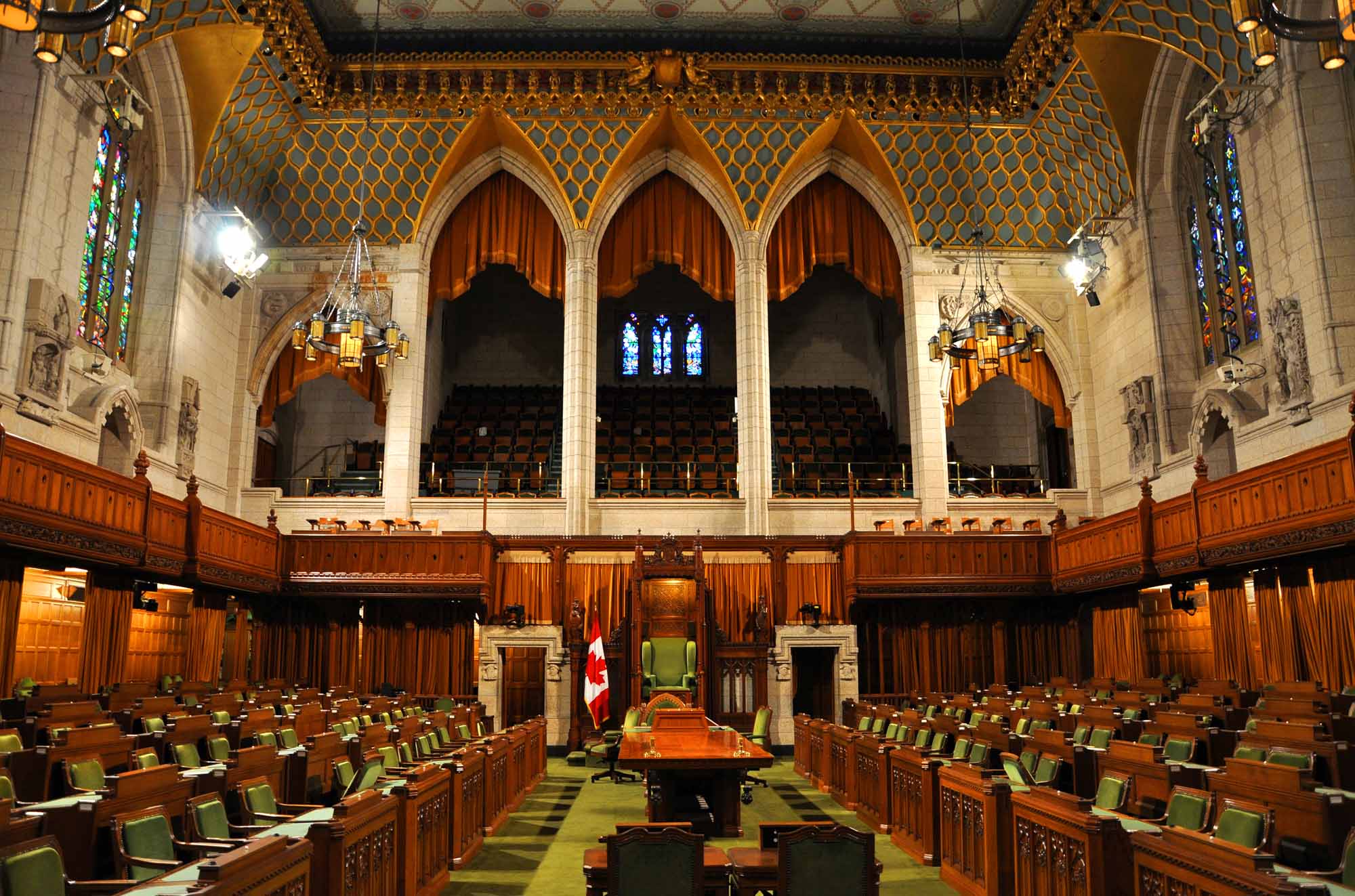Article
Siege of Fort Erie, War of 1812
The siege of Fort Erie was a British blockade of their own fort located at the entrance to the Niagara River opposite Buffalo, New York, which the Americans had captured on 3 July 1814.

Enter your search term
Signing up enhances your TCE experience with the ability to save items to your personal reading list, and access the interactive map.
Create AccountArticle
The siege of Fort Erie was a British blockade of their own fort located at the entrance to the Niagara River opposite Buffalo, New York, which the Americans had captured on 3 July 1814.
"https://www.thecanadianencyclopedia.ca/images/tce_placeholder.jpg?v=e9dca980c9bdb3aa11e832e7ea94f5d9" // resources/views/front/categories/view.blade.phphttps://www.thecanadianencyclopedia.ca/images/tce_placeholder.jpg?v=e9dca980c9bdb3aa11e832e7ea94f5d9

Article
On the evening of 15 April 1945, the Canadian minesweeper HMCS Esquimalt set out from Halifax on an anti-submarine patrol around the harbour approaches.
"https://d3d0lqu00lnqvz.cloudfront.net/media/media/462169b7-3005-4458-85d7-605eb8f68e2d.jpg" // resources/views/front/categories/view.blade.phphttps://d3d0lqu00lnqvz.cloudfront.net/media/media/462169b7-3005-4458-85d7-605eb8f68e2d.jpg

Article
On the evening of 27 June 1918, while sailing from Halifax, Nova Scotia, to Liverpool, England, the Canadian hospital ship Llandovery Castle was torpedoed and sunk by a German U-boat (U-86). Of the 258 crew and passengers, only 24 survived. Almost all the Canadian Army Medical Corps personnel were killed: six male officers, 64 enlisted men and 14 nursing sisters. Only one lifeboat escaped; the rest were either sucked under as the ship sank or attacked by the U-boat. The submarine’s officers were later charged with committing a war crime.
"https://d3d0lqu00lnqvz.cloudfront.net/ASW/VictoryBondsPosterLlandoveryCastle1918.jpg" // resources/views/front/categories/view.blade.phphttps://d3d0lqu00lnqvz.cloudfront.net/ASW/VictoryBondsPosterLlandoveryCastle1918.jpg

Article
The SS Caribou was a passenger and train ferry that operated in the Cabot Strait between Port aux Basques, Newfoundland and North Sydney, Nova Scotia. On 14 October 1942, the German submarine U-69 sank the vessel, causing the worst loss of life in Canadian waters during the Second World War.
"https://d3d0lqu00lnqvz.cloudfront.net/media/new_article_images/Caribou/ss-caribou-1920-1940.jpg" // resources/views/front/categories/view.blade.phphttps://d3d0lqu00lnqvz.cloudfront.net/media/new_article_images/Caribou/ss-caribou-1920-1940.jpg

Article
An Act for the Abolition of Slavery throughout the British Colonies; for promoting the Industry of the manumitted slaves; and for compensating the Persons hitherto entitled to the Service of such Slaves (also known as the Slavery Abolition Act) received Royal Assent on 28 August 1833 and took effect 1 August 1834. The Act abolished enslavement in most British colonies, freeing over 800,000 enslaved Africans in the Caribbean and South Africa as well as a small number in Canada.
"https://d3d0lqu00lnqvz.cloudfront.net/media/media/9ea57f84-ae9c-45f6-97a9-ee077202abee.jpg" // resources/views/front/categories/view.blade.phphttps://d3d0lqu00lnqvz.cloudfront.net/media/media/9ea57f84-ae9c-45f6-97a9-ee077202abee.jpg

Article
To a tremendous extent, the enslavement of Indigenous peoples defines slavery in Canada. Fully two-thirds of the slaves in the colony of New France were Indigenous. After 1750, the number of Indigenous slaves brought into French Canada began to decline. When slavery was abolished in British colonies in 1834, Black slaves far outnumbered Indigenous slaves. (See also Black Enslavement in Canada.) The enslavement of Indigenous peoples is part of a dark legacy of colonization that has had implications on generations of Indigenous peoples in Canada and throughout North America.
"https://d3d0lqu00lnqvz.cloudfront.net/media/media/1ddef9e7-e3c5-4510-9e9c-e1994ac29434.jpg" // resources/views/front/categories/view.blade.phphttps://d3d0lqu00lnqvz.cloudfront.net/media/media/1ddef9e7-e3c5-4510-9e9c-e1994ac29434.jpg

Article
Smallpox is an infectious disease caused by the variola virus. The disease arrived in what is now Canada with French settlers in the early 17th century. Indigenous people had no immunity to smallpox, resulting in devastating infection and death rates. In 1768, arm-to-arm inoculation became more widely practised in North America. By 1800, advances in vaccination helped control the spread of smallpox. Public health efforts also reduced rates of infection. In the 20th century, Canadian scientists helped the World Health Organization eradicate smallpox. Eradication was achieved in 1979, but virus stocks still exist for research and safety reasons. Click here for definitions of key terms used in this article.
"https://d3d0lqu00lnqvz.cloudfront.net/media/new_article_images/Smallpox/Smallpox_victim.jpg" // resources/views/front/categories/view.blade.phphttps://d3d0lqu00lnqvz.cloudfront.net/media/new_article_images/Smallpox/Smallpox_victim.jpg

Article
Social history is a way of looking at how a society organizes itself and how this changes over time. The elements that make up Canada’s social history include climate and geography, as well as the transition to industrialization and urbanization.
"https://d3d0lqu00lnqvz.cloudfront.net/media/media/deaaaf0f-2d04-4ae8-8391-d6255fe2a78a.jpg" // resources/views/front/categories/view.blade.phphttps://d3d0lqu00lnqvz.cloudfront.net/media/media/deaaaf0f-2d04-4ae8-8391-d6255fe2a78a.jpg

Article
Sod houses, or “soddies,” were a common style of dwelling built in the Prairies during the second half of the 19th century. Soddies were small structures cheaply built out of blocks of sod and rudimentary house fittings. Sod refers to grass and the soil beneath it that is held together by the grass’s roots. Although the term “sod house” is primarily associated with Canadian and American structures built during westward expansion, the structures found their architectural roots in Indigenous and Norse practices. Sod houses have come to symbolize the hardship of homestead life, despite shacks and log cabins being the primary form of housing.
"https://d3d0lqu00lnqvz.cloudfront.net/media/media/5c19f8b0-969e-4d19-b834-6ec2c4de6805.jpg" // resources/views/front/categories/view.blade.phphttps://d3d0lqu00lnqvz.cloudfront.net/media/media/5c19f8b0-969e-4d19-b834-6ec2c4de6805.jpg

Article
The Sombra Township Treaty of 1796 (also known as Treaty 7 in the Upper Canada treaties numbering system) was an early land agreement between First Nations and British authorities in Upper Canada (later Ontario). It was one of a series of Upper Canada Land Surrenders. The Sombra Township Treaty encompassed a tract of land 12 miles square (about 31 kilometres square) on the St. Clair River in the southwestern part of the colony. The British originally purchased it to offer it for settlement to their Indigenous allies who had fought with them during the American Revolution but who still lived in the new nation of the United States."
"https://d3d0lqu00lnqvz.cloudfront.net/SombraTreaty.jpg" // resources/views/front/categories/view.blade.phphttps://d3d0lqu00lnqvz.cloudfront.net/SombraTreaty.jpg

Article
South Sea Company, chartered in 1711 by the British Parliament, with a monopoly over the W coast of the Americas to a distance of 300 leagues out to sea. In 1720 it assumed a large part of the British national debt and almost collapsed that year in a stock market crash known as the South Sea Bubble.
"https://www.thecanadianencyclopedia.ca/images/tce_placeholder.jpg?v=e9dca980c9bdb3aa11e832e7ea94f5d9" // resources/views/front/categories/view.blade.phphttps://www.thecanadianencyclopedia.ca/images/tce_placeholder.jpg?v=e9dca980c9bdb3aa11e832e7ea94f5d9

Article
Sovereignty is an abstract legal concept. It also has political, social and economic implications. In strictly legal terms, sovereignty describes the power of a state to govern itself and its subjects. In this sense, sovereignty is the highest source of the law. With Confederation and the passage of the British North America Act, 1867, Canada’s Parliament was still legally under the authority of the British Parliament. By 1949, Canada had become fully sovereign in relation to Great Britain. This was due to landmark legislation such as the Statute of Westminster (1931). The Constitution Act, 1982 swept away Britain’s leftover authority. Questions of sovereignty have also been raised by Indigenous peoples in Canada and by separatists in Quebec. The latter, for a time, championed the concept of sovereignty-association.
"https://d3d0lqu00lnqvz.cloudfront.net/media/media/39b78f3a-b1bb-47ec-aa0b-d4f5de005157.jpg" // resources/views/front/categories/view.blade.phphttps://d3d0lqu00lnqvz.cloudfront.net/media/media/39b78f3a-b1bb-47ec-aa0b-d4f5de005157.jpg

Article
First used as a slogan by the Mouvement Souveraineté-Association (MSA), forerunners of the Parti Québécois, this term became the PQ’s cornerstone and main objective.
"https://d3d0lqu00lnqvz.cloudfront.net/media/media/cf2ba193-435f-4280-85a0-88632e234b1d.jpg" // resources/views/front/categories/view.blade.phphttps://d3d0lqu00lnqvz.cloudfront.net/media/media/cf2ba193-435f-4280-85a0-88632e234b1d.jpg

Article
Spanish-American War, the 1898 conflict between the US and Spain, during which the US removed Cuba, Puerto Rico, Guam and the Philippines from Spain, annexing the last 3.
"https://www.thecanadianencyclopedia.ca/images/tce_placeholder.jpg?v=e9dca980c9bdb3aa11e832e7ea94f5d9" // resources/views/front/categories/view.blade.phphttps://www.thecanadianencyclopedia.ca/images/tce_placeholder.jpg?v=e9dca980c9bdb3aa11e832e7ea94f5d9

Article
Following the global circumnavigation of Magellan's expedition, 1519-22, Holy Roman Emperor Charles V wished to locate a N American strait into Asian waters. The Spaniards possessed information on the Newfoundland and Labrador coasts from Portuguese voyages and from BASQUE fishermen and whalers.
"https://www.thecanadianencyclopedia.ca/images/tce_placeholder.jpg?v=e9dca980c9bdb3aa11e832e7ea94f5d9" // resources/views/front/categories/view.blade.phphttps://www.thecanadianencyclopedia.ca/images/tce_placeholder.jpg?v=e9dca980c9bdb3aa11e832e7ea94f5d9
